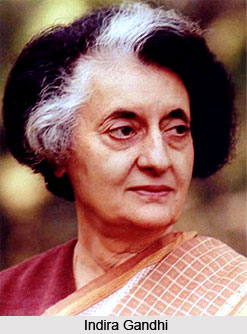 The composition of Planning Commission of India has been subjected to various changes since its birth. From the beginning the Prime Minister has been its Chairman. In 1951, the full time Deputy Chairman was appointed the Minister of Irrigation and Power. He also continued to be the Deputy Chairman (till 1953) and member of the Planning Commission. At the same time, it was decided to have a Minister of Planning, mainly to act as a spokesman of the Commission. He would be answerable to the Indian Parliament about the Commissions work, and the Deputy Chairman was appointed as Minister of Planning. In addition to the Finance Minister and the Minister of Planning, other Union Ministers have also been appointed form time to time as members of the Commission. In can thus be said that the position, as it has developed in practice and by convention, is that the Prime Minister is the Chairman of the Commission and the Minister of Finance and Planning are appointed ex-officio members of the Commission.
The composition of Planning Commission of India has been subjected to various changes since its birth. From the beginning the Prime Minister has been its Chairman. In 1951, the full time Deputy Chairman was appointed the Minister of Irrigation and Power. He also continued to be the Deputy Chairman (till 1953) and member of the Planning Commission. At the same time, it was decided to have a Minister of Planning, mainly to act as a spokesman of the Commission. He would be answerable to the Indian Parliament about the Commissions work, and the Deputy Chairman was appointed as Minister of Planning. In addition to the Finance Minister and the Minister of Planning, other Union Ministers have also been appointed form time to time as members of the Commission. In can thus be said that the position, as it has developed in practice and by convention, is that the Prime Minister is the Chairman of the Commission and the Minister of Finance and Planning are appointed ex-officio members of the Commission.
The total numbers of Ministers who were ex officio members of the Commission was three from 1951 to 1956. It increased to five in 1966. Till February 1973 the Commission consisted of Chairman and three other members. In March 1973 the number was raised to four. In 1977, the Janata Party reconstituted the Planning Commission. The Finance, Defence and the Home Minister were added to the Planning Commission as part-time members besides full-time members.
In January 1980 Mrs. Indira Gandhi again came to power. She terminated the Sixth Plan and declared that a new plan for 1980-85 would be formulated with this end in view, the Planning Commission was reconstituted. Under Rajiv Gandhi, the Commission consisted of eight members including the Deputy Chairman of whom five were full-time and two part-time members. The National Front government changed the membership of Commission to nine on 1st February, 1994; its membership stood at thirteen. The United Front government again reconstituted the Planning Commission. In 1997 its membership stood thirteen. Full time members are experts in different fields like economics, industry, science and general administration. All full time members have been given uniform term of appointment in regard to salary, travelling and daily allowances, official residence, etc. The Deputy Chairman is given the rank of a full Cabinet minister while others have the status of a Minister of State.
Currently, after all the deliberations and changes, the organisation of the planning commission is that the Indian Prime Minister is the ex-officio Chairman of the Commission and there is a nominated Deputy Chairman, who is given the rank of a full Cabinet Minister. Cabinet Ministers of India with certain important portfolios act as part-time members of the Commission, while the full-time members are experts of various fields like Economics, Industry, Science and General Administration. The majority of experts in the Commission are economists, making the Commission the biggest employer of the Indian Economic Services. The commission works under the overall governance of the National Development Council. The Deputy Chairman and the full time Members of the Commission, as a composite body, provide advice and guidance to the subject Divisions for the formulation of Five Year Plans, Annual Plans, State Plans, Monitoring Plan Programmes, Projects and Schemes. The Commission works through its various divisions of which there are a total of thirty in number.




















